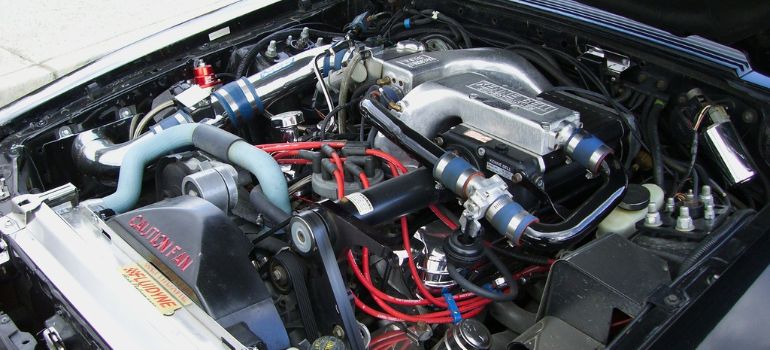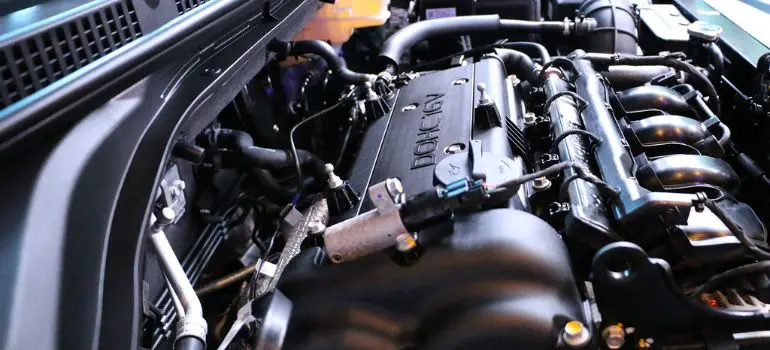In the world of small engines, whether it’s a lawnmower, chainsaw, or leaf blower, the carburetor plays a crucial role in ensuring the engine runs smoothly. A well-tuned carburetor can improve performance, fuel efficiency, and reduce emissions. However, adjusting a small engine carburetor can be a bit tricky if you’re not familiar with the process. In this guide, we’ll walk you through the steps to adjust a small engine carburetor effectively.
Understanding the Basics of a Carburetor
Before we dive into the adjustment process, let’s understand what a carburetor does and why it’s essential for your small engine.
What is a Carburetor?
A carburetor is a device that mixes air and fuel in the right proportion before it enters the engine’s combustion chamber. This mixture is vital for the engine to operate efficiently.
Why is Carburetor Adjustment Necessary?
Over time, the carburetor may go out of tune due to factors like temperature changes, engine wear, or clogs in the fuel system. Proper adjustment ensures that the engine receives the right air-fuel mixture.
Tools and Materials You’ll Need
Before you begin adjusting the carburetor on your small engine, make sure you have the following tools and materials ready:
- Screwdriver: A screwdriver will be essential for adjusting screws on the carburetor.
- Wrench: You may need a wrench to access and adjust certain parts of the carburetor or surrounding components.
- Owner’s Manual: Your engine’s owner’s manual is crucial for finding specific carburetor adjustment settings and guidelines. It provides valuable information related to your engine’s make and model.
- Safety Goggles and Gloves: Safety should always be a priority. Wear safety goggles to protect your eyes from debris and gloves to keep your hands safe from any sharp edges or hot engine parts.
- Clean, Well-Ventilated Workspace: Choose a clean and well-ventilated area to work on your small engine. Adequate ventilation ensures you won’t inhale harmful fumes, and a clean workspace reduces the risk of foreign particles getting into the engine during the adjustment process.
Step-by-Step Carburetor Adjustment
Now, let’s get into the nitty-gritty of adjusting a small engine carburetor.
Step 1: Safety First
Before you begin any work on your small engine, it’s crucial to prioritize safety. Working with machinery and engines can pose certain risks, so taking precautions is essential to protect yourself and those around you. Here are some safety measures to keep in mind:
- Proper Attire: Wear appropriate safety gear, including safety goggles and gloves. These items will protect your eyes and hands from potential hazards like flying debris or sharp engine components.
- Well-Ventilated Area: Work in a well-ventilated area or outdoors if possible. Good ventilation ensures that you won’t inhale harmful fumes, and it reduces the risk of carbon monoxide buildup if you’re working with gas-powered engines.
- Engine Off: Ensure that the engine is turned off and has had time to cool down before you begin any adjustments. A hot engine can cause burns, so allow it to cool to a safe temperature.
- Stable Surface: Place the small engine on a stable and level surface before starting any work. This prevents accidents and ensures your safety while working.
- Read the Owner’s Manual: Always refer to the owner’s manual of your small engine. It contains important safety instructions and specific guidelines for maintenance and adjustments.
- Tools and Equipment: Use the right tools and equipment for the job. Ensure that your tools are in good condition and appropriate for the task at hand.
- Fire Safety: If you’re working with a gas-powered engine, be cautious of fuel spills and flammable materials. Keep a fire extinguisher nearby and know how to use it.
- No Smoking or Open Flames: Never smoke or have open flames near the work area, especially if you’re working with gasoline or other flammable substances.
- Personal Safety: Be aware of your surroundings and avoid distractions while working. Focus on the task at hand to prevent accidents.
- Emergency Contact: Have a phone or means of communication nearby in case of an emergency. Share your location with someone and let them know that you’re working on machinery.
Step 2: Locate the Carburetor

Identify the carburetor on your small engine. It’s typically located near the air filter and has adjustment screws.
Step 3: Check the Owner’s Manual
Refer to your engine’s owner’s manual to find the recommended carburetor adjustment settings. These settings may vary depending on the make and model of your engine.
Step 4: Adjust the Idle Screw
Start by adjusting the idle screw. Turn it clockwise to increase the idle speed and counterclockwise to decrease it. Set the idle speed to the manufacturer’s recommended RPM.
Step 5: Adjust the High-Speed Screw
Next, adjust the high-speed screw. This screw controls the air-fuel mixture at high engine speeds. Turning it clockwise will make the mixture leaner, while turning it counterclockwise will make it richer. Fine-tune it according to your owner’s manual.
Step 6: Warm Up the Engine
Before you begin adjusting the carburetor on your small engine, it’s important to ensure that the engine is properly warmed up. This step is essential because carburetor adjustments should be made with the engine operating at its normal operating temperature. Here’s how to do it:
- Start the Engine: Begin by starting your small engine. Make sure it’s in a well-ventilated area or outdoors to allow for proper airflow.
- Allow the Engine to Idle: Let the engine idle for a few minutes. During this time, the engine will gradually reach its normal operating temperature. It’s important not to rush this process, as adjustments made with a cold engine may not be accurate.
- Observe the Engine: While the engine is idling, pay attention to its performance. Listen to the sound it makes and watch the exhaust. A warmed-up engine should produce a smooth and consistent sound, and the exhaust should be clean without any excessive smoke or sputtering.
- Proceed with Adjustments: Once the engine is adequately warmed up, you can proceed with adjusting the carburetor, as described in the previous steps.
Step 7: Fine-Tune the Mixture
With the engine running, fine-tune the mixture by adjusting the high-speed screw. Listen to the engine’s sound and watch the exhaust. You want a smooth, consistent sound and a clean exhaust.
Step 8: Test the Throttle Response
After adjusting the carburetor on your small engine, it’s essential to test the throttle response to ensure that your adjustments have been effective. This step will help verify that your engine is running smoothly and responding as expected. Here’s how to do it:
- Accelerate and Decelerate: With the engine running, gently and gradually accelerate by squeezing the throttle or engaging the throttle control lever. Pay close attention to how the engine responds. It should accelerate smoothly without hesitation or stumbling.
- Observe the Deceleration: After accelerating, release the throttle and allow the engine to decelerate. Again, observe how the engine responds during this process. A well-adjusted carburetor will result in smooth deceleration without any abrupt drops in RPM.
- Repeat the Process: Perform this acceleration and deceleration test multiple times to ensure consistency in throttle response. Listen for any unusual sounds or hesitation during these maneuvers.
- Check for Stalling: If the engine stalls or hesitates significantly when you release the throttle, it may indicate that further adjustments are needed.
- Fine-Tune if Necessary: If you notice any issues with the throttle response, you may need to fine-tune your carburetor adjustments. Refer to your owner’s manual for guidance on making precise adjustments.
Conclusion
Adjusting a small engine carburetor might seem daunting at first, but with the right tools, knowledge, and patience, you can ensure your engine runs efficiently. Regular maintenance and proper adjustments can extend the life of your small engine and improve its overall performance.
Now, you’re ready to take on the task of carburetor adjustment. Remember to refer to your owner’s manual for specific guidelines and always prioritize safety during the process.
FAQs
- Is carburetor adjustment necessary for all small engines? Yes, carburetor adjustment is essential for maintaining optimal performance in small engines. It ensures the right air-fuel mixture, improving efficiency.
- What are the signs that my carburetor needs adjustment? Common signs include rough idling, poor acceleration, and increased fuel consumption. If you notice any of these, it’s time for an adjustment.
- Can I adjust the carburetor without any prior experience? While it’s possible to adjust the carburetor yourself, it’s recommended to consult your engine’s owner’s manual or seek professional help if you’re unsure.
- How often should I adjust the carburetor on my small engine? Regular maintenance includes carburetor adjustment. Aim to do it at least once a year or if you notice performance issues.
- What should I do if my engine continues to have problems after carburetor adjustment? If problems persist, it’s best to consult a professional mechanic to diagnose and address any underlying issues with your small engine.



